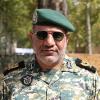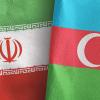
A commander in the Kurdistan Democratic Party of Iran was assassinated on March 6 in northern Iraq by agents of Iran, according to members of the dissident group.
“Qader Qaderi was executed with twenty shots,” says a press release from Arez Ramazani, Representative of the KDP-I board in Sweden.
“Iran’s agents persecuted and executed him between Balisan and Chwarqurne in a part of Kurdistan.”
The killing of Qaderi is part of a larger campaign being waged by Tehran against Kurdish groups in Iran and their supporters who live in exile in the Kurdistan region of northern Iraq. “Between the 1980s and 1990s about 500 Kurdish Democratic Party of Iran members were killed in [the] Iraqi part of Kurdistan by Iranian agents,” the group’s press release reads. Dr. Abdul Rahman Ghassemlou, a leader of the group, was killed in Vienna allegedly by Iranian agents in 1989.
In the 2000s Iran ceased its assassination campaign and Kurdish groups such as the KDP-I also toned down their resistance activity inside Iran.
However in 2016 Islamic Revolutionary Guard Corps agents were accused of bombing the KDP-I headquarters in Koya. There was another car bombing on March 1 near Erbil against a KDP-I member. “We have no other enemies besides the Islamic regime in Iraq,” the KDPI says, adding that this is definitely the handiwork of the regime. “KDP-I has never used terror [and] will never use terror either. But we will eventually make the Islamic regime fall.”
There are several Iranian dissident groups that have members in northern Iraq. The Democratic Party of Iranian Kurdistan (KDPI) was founded in 1945 and has been resisting the Ayatollahs since the 1980s. The KDP-I was formed when the group split in two in 2006. There is also the Kurdistan Free Life Party (PJAK) which is closely allied to the left wing Kurdistan Workers Party (PKK) in Turkey. The Kurdistan Freedom Party (PAK) and Komala Party of Iranian Kurdistan also oppose the regime.
In recent years during the war against Islamic State some of the Iranian Kurdish groups whose members live in exile put forth plans to increase resistance across the border, some of them even sending activists.
With Iran’s increasing influence in Iraq and in light of the protests that swept Iran in late December, the regime may have sought to send a message not to continue activity. The killing of Qaderi came a day after the commemoration of the March 5, 1991 uprising against Saddam Hussein; Qaderi was symbolically killed on the road from Rania where the uprising began.
The Islamic Revolutionary Guard Corps certainly does not want Kurds in Iran to get any idea that they might throw off the yoke of the regime the way that Kurds in Iraq rose up against Saddam.










